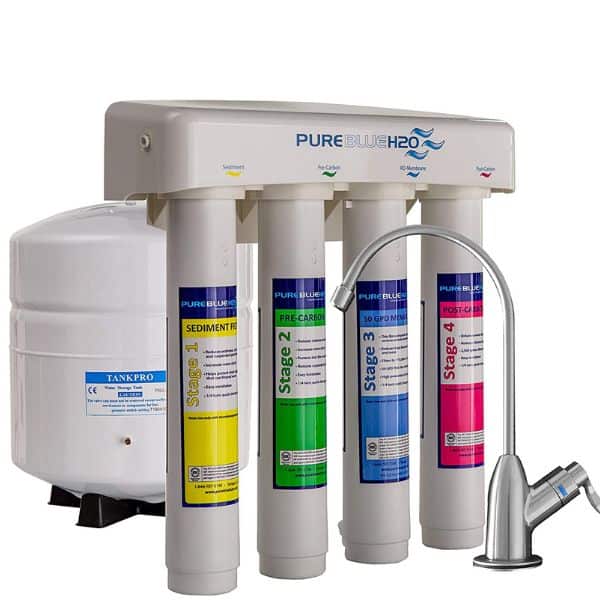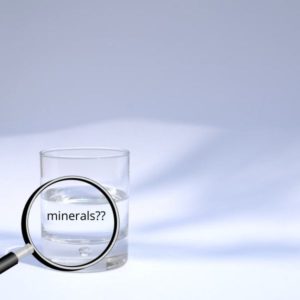What Are the Stages of the Reverse Osmosis System?
Reverse osmosis removes contaminants from drinking water. RO is a filtration process that is used to purify water. It works by forcing water molecules through a semi-permeable membrane that removes impurities. The reverse osmosis system has several stages that work together to create clean, drinkable water.
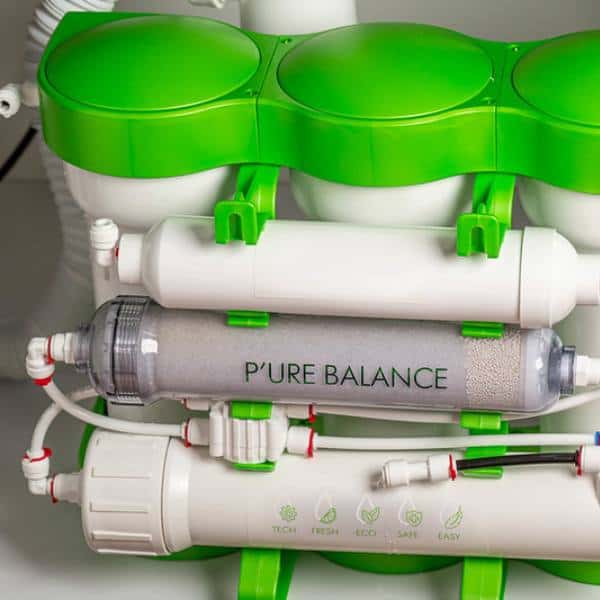
Understanding how each of these stages functions can help you determine if reverse osmosis is the right solution for your home or business.
Phase 1: Prefiltration
The prefiltration stage is an essential step in every RO system. Here, a sediment filter which is a type of mechanical filter removes larger particles such as sand, silt, and bigger suspended particles. At this early stage, you would notice a decrease in water turbidity.
Prefilters not only help reduce contaminants but also protect the delicate RO membrane. After the prefiltration, the water then enters the next reverse osmosis stage.
Phase 2: Removal of Chlorine
Another thing that can destroy the RO membrane is chlorine. Removing this oxidant from the water during this stage will protect the RO membrane.
This phase typically utilizes a carbon block that uses compressed carbon or GAC (Granulated Activated carbon), which uses loose carbon granules. Between the two, GAC is more efficient in filtering chlorine, VOCs, hydrogen sulfide, and some pesticides due to its high adsorption properties.
Advanced countertop reverse osmosis systems incorporate two carbon filters to better filter water contaminants.
Phase 3: Removal of Other Contaminants
During this stage, the water enters the RO membrane, usually made of a thin polyamide film over a polysulfone porous layer and secured with a non-woven fabric sheet.
The thin layer is specially designed to reject atoms and molecules of various contaminants. It does not allow heavy metals, nitrates, sulfates, harmful microorganisms, pharmaceuticals, or healthy trace minerals to pass through the membrane.
It is worth mentioning that the RO membrane rejects contaminants according to their size and ions. It leaves impurities bigger than its micropore size, which is 0.0001 microns. And it does not allow monovalent ions (atoms with a valency of one) like sodium to penetrate.
All these contaminants become part of the brine or reject water which is then flushed down the drain. The purified water then goes to the RO storage tank, ready to be used.
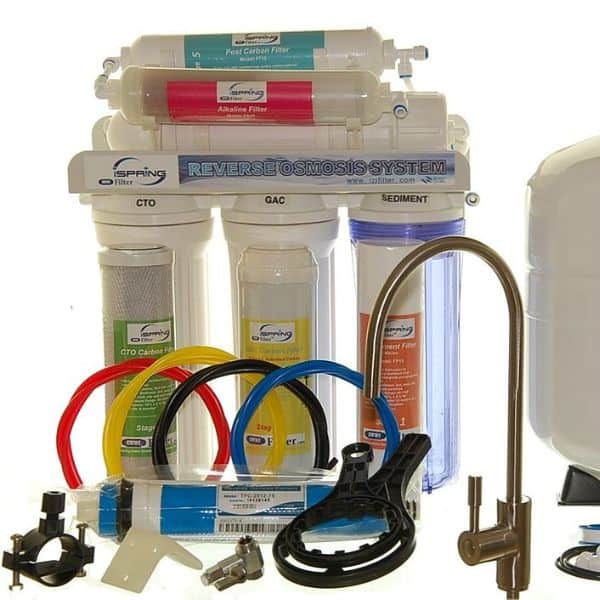
Phase 4: Postfiltration
The fourth stage of filtration is also called the polishing stage. Before the water leaves your faucet, the water has to go through the post filter, which is usually a carbon filter. Here, the carbon filtration stage removes any taste or odor that can affect the palatability of water.
For RO systems that have a remineralization filter, it is in this stage that the lost essential minerals like calcium, magnesium, and potassium are restored.
Reverse Osmosis Systems Based on the Number of Filtration
Depending on your preference and needs, reverse osmosis systems offer different filtration stages to deliver safe and healthy drinking water.
Three-Stage Reverse Osmosis System
A three-stage reverse osmosis system is the basic RO system that consists of the three essential stages— sediment prefilter, carbon filter, and RO membrane filter.
Sediment Prefilter
Sediment filters remove large particles in water, such as silt, rust, and organic matter. They should be released in the first stage so that later stages can efficiently filter the contaminants that sediment filters cannot.
Carbon Filter
A carbon filtration system, either a carbon block or GAC (Granulated Activated Carbon) is an effective filter that removes VOCs, hydrogen sulfide, some pesticides, and oxidants like chlorine.
RO Membrane
The last stage of the three-stage reverse osmosis removes all the contaminants that the previous filters cannot. Contaminants such as heavy metals, pharmaceuticals, nitrates, sulfates, and pathogenic microorganisms are rejected by the RO membrane.

Four & Five Stage Reverse Osmosis System
In four and five-stage systems, the water passes through several filtration stages before reaching your faucet. The final filtration improves the aesthetic quality of water.
Sediment Pre-Filter
Sediment prefilters remove the larger particulates like sand and rust to protect the RO membrane and clog the system.
Carbon Filter
Carbon filters remove chlorine, VOCs, pesticides, and hydrogen sulfide from the water. Some RO systems use two carbon filters to remove these contaminants more efficiently.
RO Membrane
The third stage consists of an RO membrane that removes up to 99% of total dissolved solids (TDS), heavy metals, and pathogens like viruses, bacteria, fungi, and protozoa.
Postfilter
Finally, after the RO membrane has done its job, a postfilter removes any remaining unsightly taste or odor.
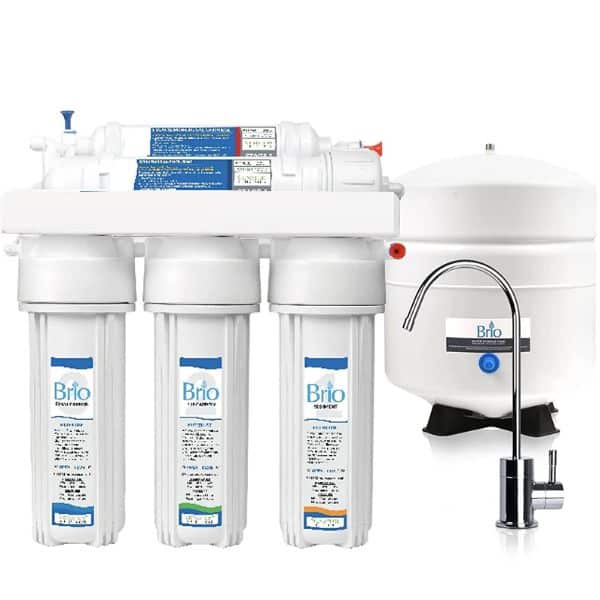
When Should You Replace the Ro Membrane and Other Filters?
Knowing when to replace the reverse osmosis membrane and other filters in your water filtration system is essential for ensuring you always have clean, safe drinking water.
Always check with your manufacturer when replacing your system’s RO membrane and other filters. Some RO membranes must be replaced every year, while others must be replaced every two years.
As to sediment and carbon filters, some manufacturers advise changing them as often as every six months and some every twelve months.
Of course, observing the quality of your water and the performance of your reverse osmosis water system will help you determine if replacement is needed even before the end of its filter life.
Regular maintenance ensures you get the most out of your RO system. This includes regularly cleaning pre-filters and checking pressure gauges to ensure there isn’t excessive pressure build which may affect performance.
Conclusion
In conclusion, the multi-stage reverse osmosis filtration system is an efficient method to access clean and safe drinking water. Furthermore, understanding the different filtration stages helps you determine what RO system would work best for your needs.
